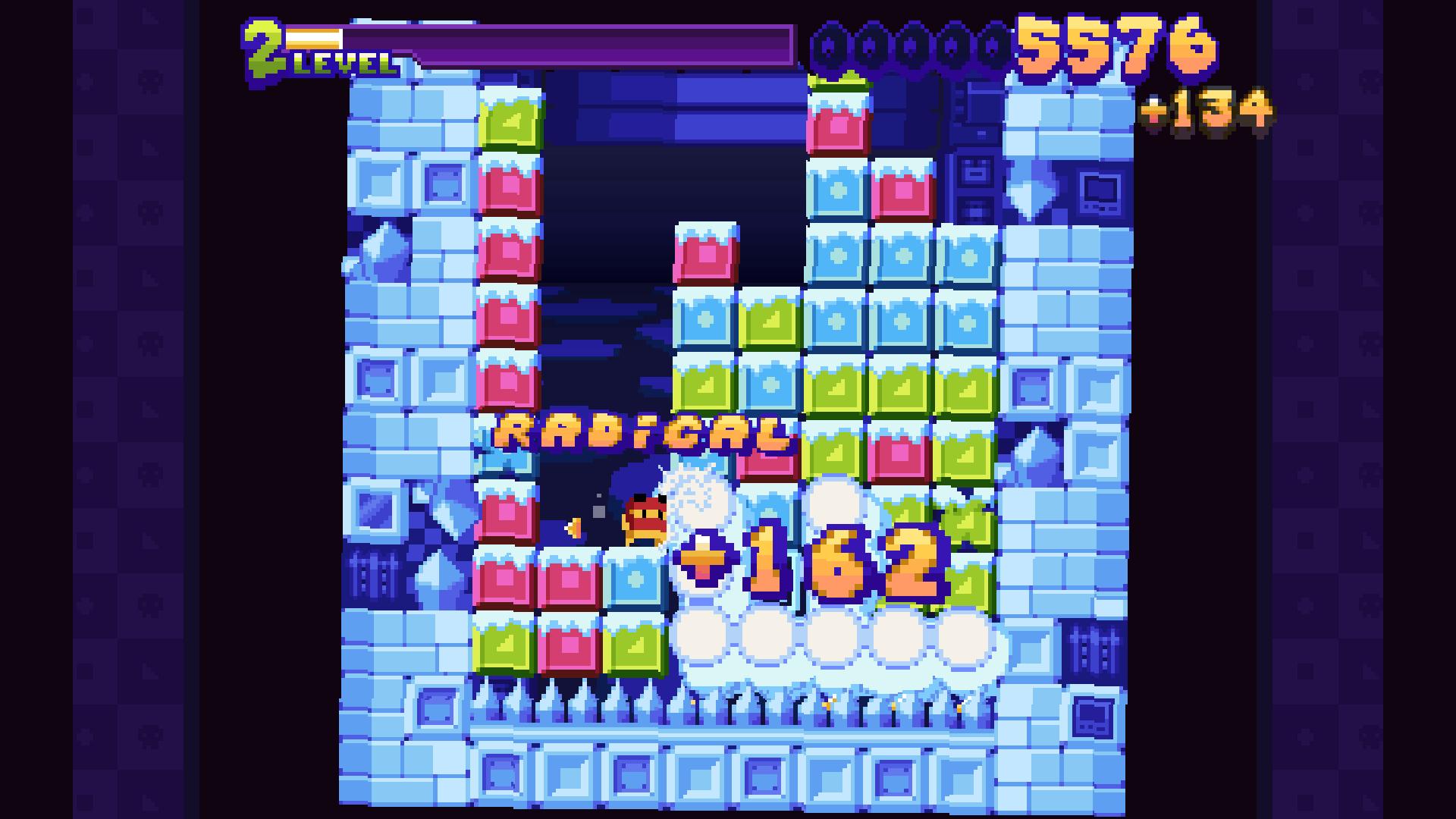What a crazy week this has been. I am proud to announce that with the help of David Burke, Colleen O'Keefe, and Alyssa Harn, our game Kamikaze is 99% complete and ready for download!
It's been a long road and I'd like to take this opportunity to talk about how this project got to where it is today.
As indicated by its art design (and even moreso with the shameless ripping of the OST) Kamikaze is inspired by Wayforward's Mighty Switch Force series.
While I'll admit I never got the chance to try the game itself, I was captiviated by the gameplay footage I saw over YouTube. Through its optimistic voice actress, bright colors and downright awesome soundtrack, it made you feel good about playing it. Like you wanted to high five the main character.
I made it my goal to make something similar. I too wanted to make a game that made you feel good about playing it.
| Like this, but not as good |
Although the prototype was relatively fun and fulfilled the guidelines given for the project, it was far from a "finished" game as there was no real ending. The planes would just keep coming and coming until you ran out of lives and submitted your high score.
Soon, it became time to propose an idea for a final project for class and I saw the opportunity to bring my original aspirations to make a feel-good game to fruition. I sat down later that night and created what would be the iconic heroin for my game: Kami Kayes
 |
| Kamikaze? Kami Kayes? Get it? |
She was adorable and I was proud. My art in the past has been notorious for being dark and revolting, even a little creepy; it was nice to make something that would make people smile.
I posted her to Facebook and people ate it up, I was surprised by how many liked my original line work.
I knew of course, I wouldn't be able to accomplish the task of making this game on my own, so I proposed my idea to class. It was easy enough, I'm an experienced performer so I was confident that I would get support after speaking. Although I got a ton of good feedback from the audience nobody really stepped up to help. About to give up, I sent one final message over Canvas to David Burke. To my surprise, he contacted me back the next day and we became partners.

We worked together very well, I handled the artwork and general direction of the game, and he took care of the programming. We completed one level, then another, then another! I enlisted the help of a good friend to do the voice acting, I recruited another classmate to design the splash artwork. I had a real project going and I was at the head of it. It was simply exhilarating.
Time passed by, the deadline came closer, but we were not daunted. In a last minute effort, we implemented the boss and polished the game for release.
We were truly blessed on presentation day, our instructor had offered us the best spot in class for display: the computer connected to the projector. The players who participated had loads of fun and the onlookers seemed genuinely impressed with our work.
This is only the beginning. I have big plans for Kami Kayes and Kamikaze, one that involves a possible mobile app and one hell of an impressive portfolio piece. Overall it's been a fun experience making this game and I am excited for what the future holds.













